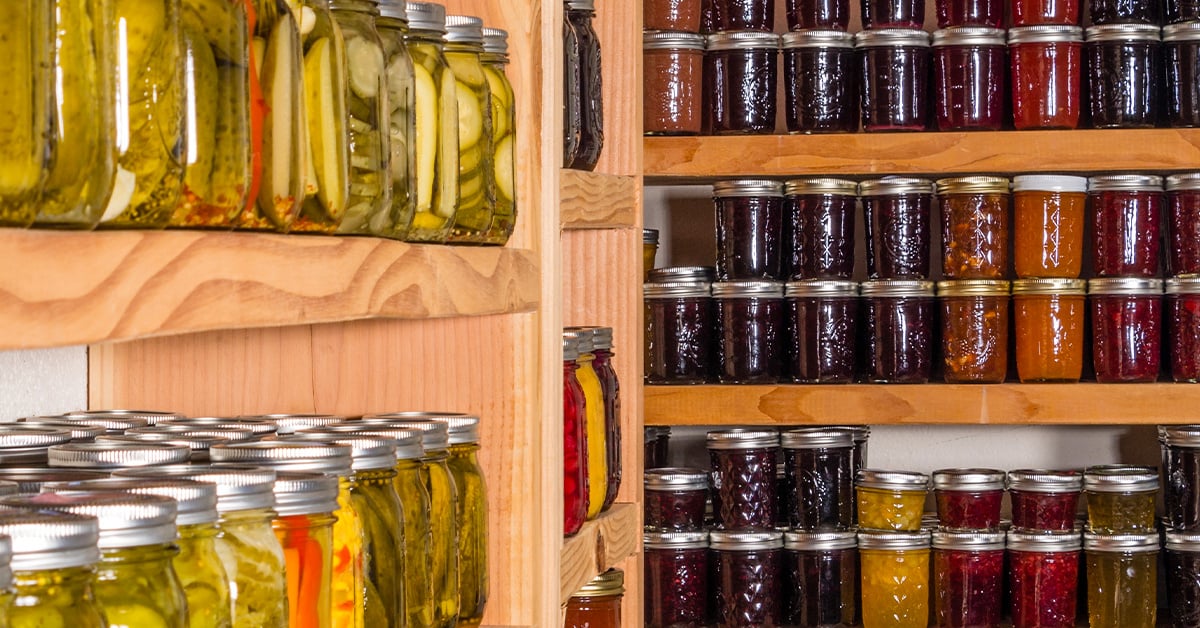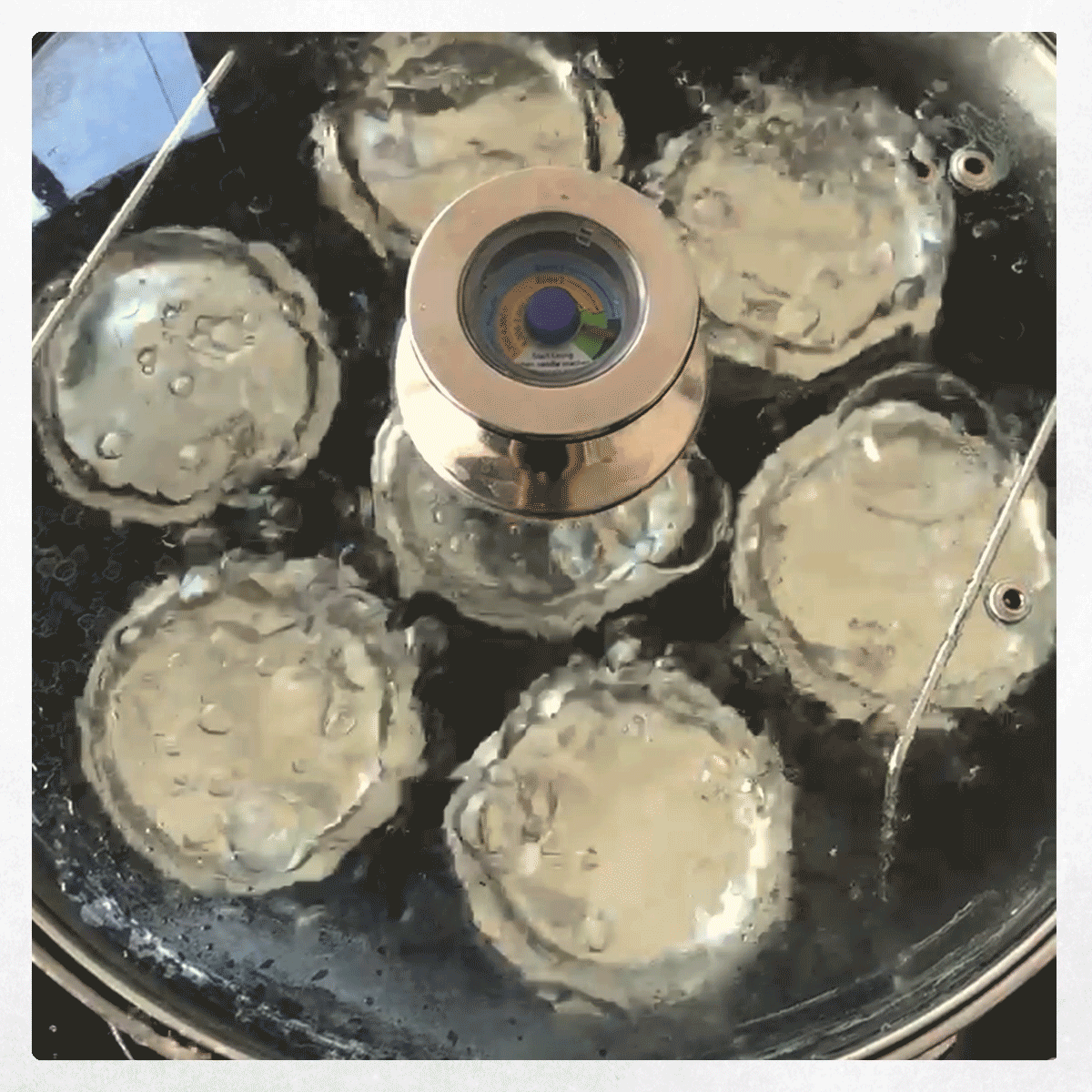
As gardeners, we all enjoy harvesting our homegrown fruits and vegetables, especially after months of planting and tending to each plant. But, let's face it, when your garden starts showering you with an abundance of fresh produce, you've got to figure out how to make that goodness last. The solution? Food preservation!
Let's dig in to why it's important to preserve your garden's harvest, break down some preservation methods (weighing the pros and cons), and toss in some tips on when and how to make the most of those preserved treasures. So, get ready for a little garden-to-table magic!
Why To Preserve Food from Your Garden
Preserving food from your garden isn't just about extending the shelf life of your harvest; it's a way to capture the essence of the growing season and enjoy the fruits of your labor all year round. Here are some good reasons to embrace food preservation:
Reduce Waste
Preservation prevents surplus produce from going to waste. You can enjoy the fruits of your labor without overloading your dinner plate.
Cost-Effective
Preserving your own food is a cost-effective way to enjoy organic, homegrown produce throughout the year, saving you money in the long run.
Nutrient Retention
Many preservation methods lock in the vitamins and minerals present in your garden-fresh produce, ensuring you have access to nutritious ingredients, even in the off-season.
Homemade Goodness
Homemade preserves allow you to control the ingredients, flavors, and additives, ensuring a healthier and more flavorful pantry.

Garden Food Preservation Methods
Enjoy your garden's bounty for months to come and explore the different food preservation methods that can extend their shelf life.
Canning
Preservation prevents surplus produce from going to waste. You can enjoy the fruits of your labor without overloading your dinner plate. One of the most popular methods of food preservation, canning involves packing cooked food into sterile glass jars and sealing them.
There are two primary canning methods:
-
-
- Water Bath Canning: Ideal for high-acid foods like fruits, tomatoes, jellies and pickles, this method involves submerging jars in boiling water to destroy bacteria and enzymes that can spoil food.
- Pressure Canning: Used for low-acid foods like vegetables, meats, and poultry, pressure canning uses high temperatures to safely preserve food.
-
Freezing
Freezing is a simple and effective preservation method that helps to retain the texture and flavor of vegetables and fruits. To freeze garden produce, blanching is often necessary. This involves briefly boiling the produce and then rapidly cooling it to halt enzymatic activity. For longer storage, vacuum-sealed bags or airtight containers are recommended to prevent freezer burn.
Drying or Dehydrating
Drying food, whether in the sun, an oven, or a food dehydrator, removes moisture, making it inhospitable for bacteria and mold. This method works well for fruits, herbs and some vegetables. The result is lightweight, space-saving, and nutritious dried food that can be rehydrated when needed.

Freeze-Drying
Freeze drying stands out as a highly effective method for preserving the freshness and nutritional integrity of homegrown produce. The process involves freezing the food, removing moisture through sublimation and sealing it in a vacuum-sealed container. The outcome is lightweight, shelf-stable products that retain the original taste and nutritional content. This method proves particularly beneficial for preserving fruits, vegetables and cooked meals without compromising quality.
Pickling
Pickling involves immersing vegetables or fruits in a brine solution or vinegar to preserve them. This method not only preserves food, but also imparts unique flavors. Pickles, relishes, and chutneys are classic examples of pickled delicacies. Experiment with different spices and herbs to create your own signature pickling recipes.

Preserves and Jams
If you have an abundance of fruits, consider turning them into delicious preserves and jams. These sweet spreads not only preserve your harvest but also provide a delightful treat for your toast, muffins, or desserts. Water bath canning and freezing are common preservation methods for fruit jams and preserves.
Fermentation
Fermentation is an ancient technique that not only preserves food, but also enhances its nutritional value. Common examples include pickles, cider, and yogurt. Beneficial bacteria and yeasts consume sugars and starches, creating an acidic environment that inhibits spoilage.
Items like cucumbers, cabbage and even hot peppers can be transformed into tangy, probiotic-rich pickles through fermentation. You can also ferment fruits and vegetables into delicious homemade sauerkraut and kimchi.
Root Cellaring
Root cellars are ideal for storing root vegetables, apples, and other produce that needs a cool, dark, and humid environment to stay fresh. These natural underground or basement storage spaces maintain ideal conditions for extended preservation.
Smoking
Smoking is a fantastic method for preserving meats, fish, and certain vegetables. It not only imparts a unique smoky flavor, but also dehydrates and inhibits the growth of harmful microorganisms.
Is There a Best Preservation Method for Different Foods?
When it comes to preserving your garden's bounty, there's no one-size-fits-all approach. The ideal preservation method varies and it all depends on the type of food you're working with.
Food Characteristics
Different fruits and vegetables have unique characteristics. Some are high in acidity, while others are low, and this plays a significant role in determining the best preservation method. For instance, high-acid foods like tomatoes and pickles do well with canning, while low-acid foods like green beans or meat require pressure canning.
Texture and Flavor
Some preservation methods can affect the texture and flavor of your produce. For instance, freezing is excellent for preserving the vibrant colors and flavors of many fruits and vegetables, making it a go-to choice for items like berries and peas. However, not everything fares well in the freezer – items like lettuce and cucumbers tend to lose their crispness and are better suited for other methods like pickling.
Longevity
The length of time you want your food to last is crucial. Canning, with its sealed, airtight containers, provides a longer shelf life compared to freezing or dehydrating. So, if you're aiming for food that will last for years, canning or freeze-drying might be the way to go.

Convenience and Space
Different preservation methods require varying levels of effort and equipment. Dehydrating is simple and space-efficient, while canning may require specialized gear and more effort. If you're working with limited space or time, the convenience of the method becomes a key factor in your choice.
Nutritional Considerations
If preserving the maximum nutritional value of your produce is a priority, some methods are better than others. Freezing is known for preserving nutrients well, while canning may cause some nutrient loss due to the heat involved.
There's no one "best" preservation method because nature's bounty is wonderfully diverse. The art of food preservation lies in understanding the unique needs and characteristics of the foods you've lovingly cultivated in your garden. By choosing the right method for each type of produce, you can ensure that your preserved treasures not only taste great, but also stand the test of time. So, whether you're canning, freezing, dehydrating, fermenting, or pickling, remember that the ideal method is the one that best suits the fruits and vegetables you've grown with care.
For more tips and tools, visit your local IFA Country Store and talk with one of our food preservation experts.
Information for this article was provided by Heidi Kroeger, IFA; Tina Potter, Ogden IFA Country Store; Rebecca Broadus, Tremonton IFA Country Store; Riley E. Carlson, Homesteading.

















